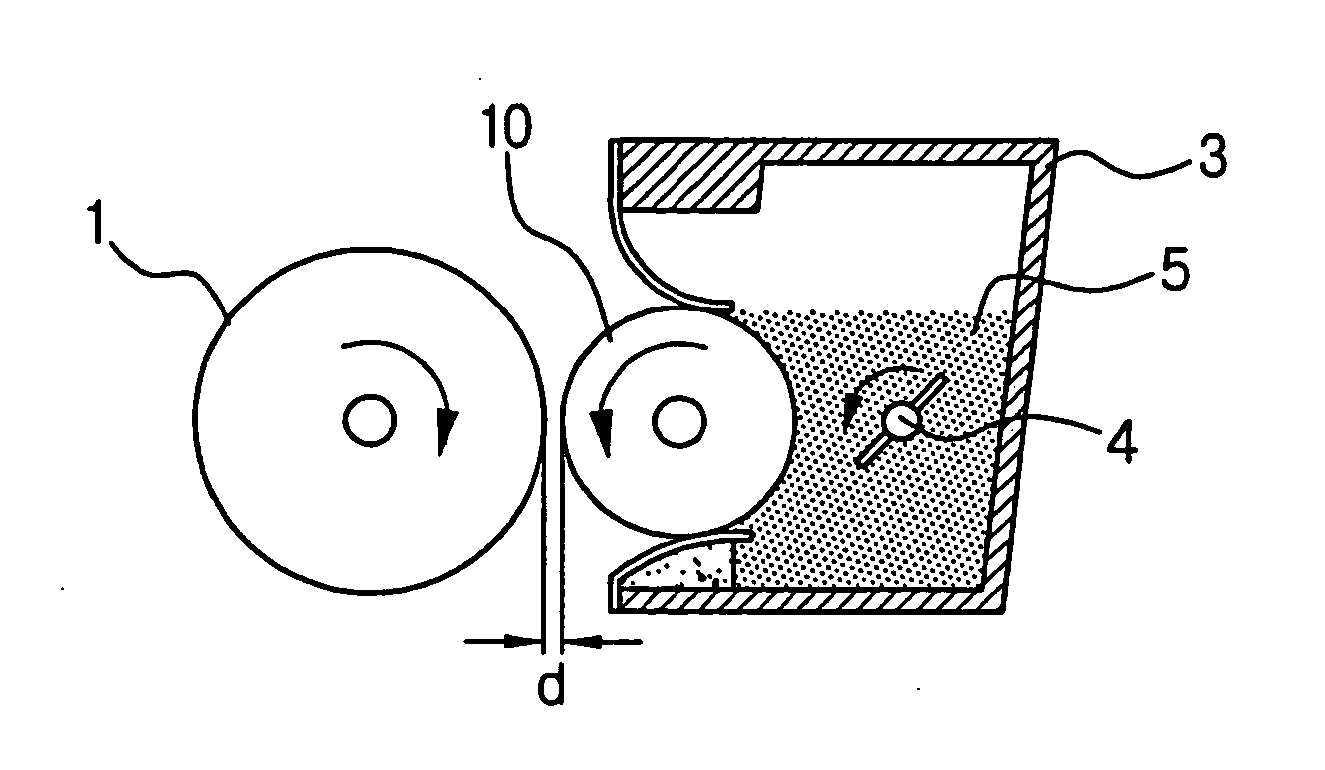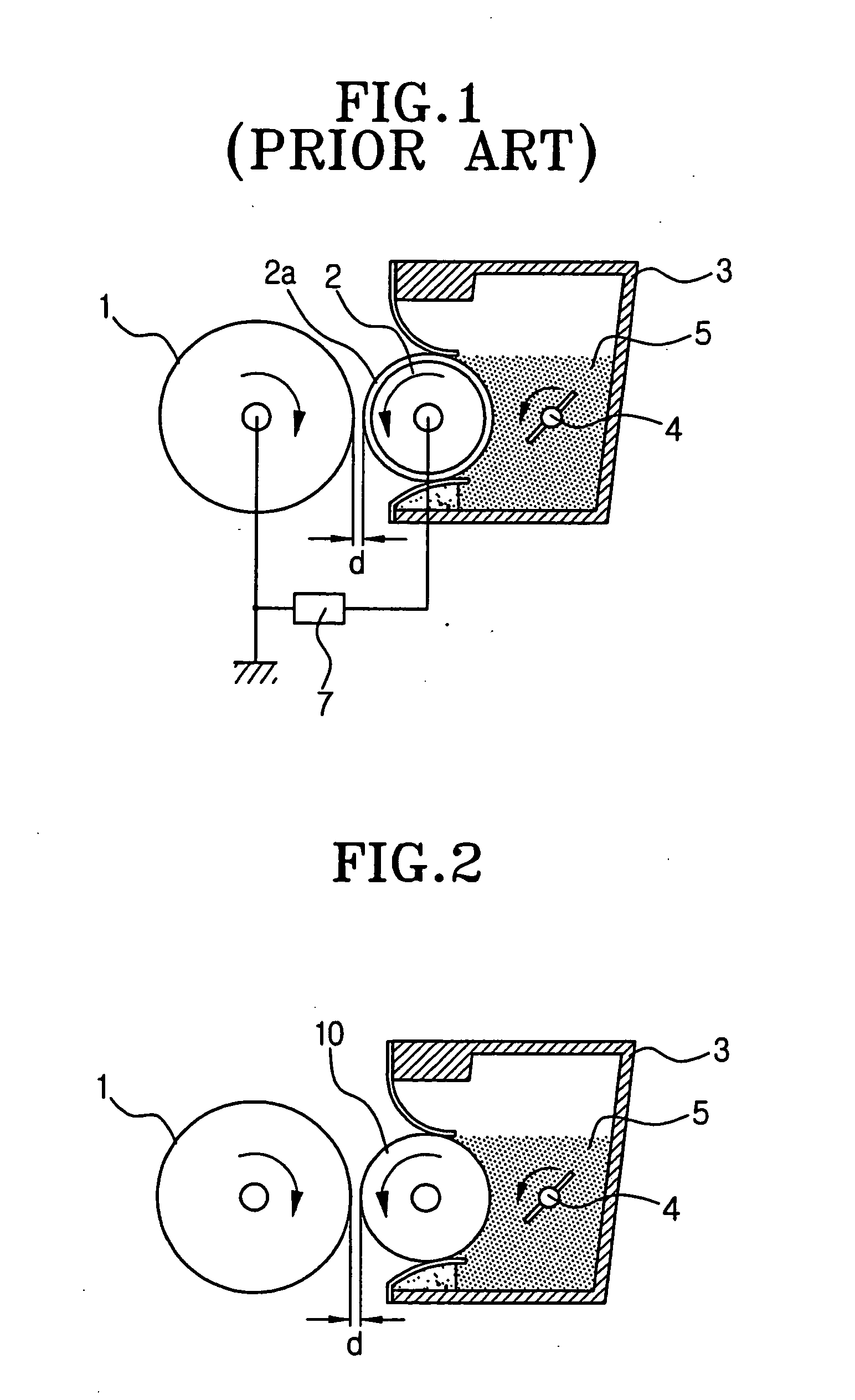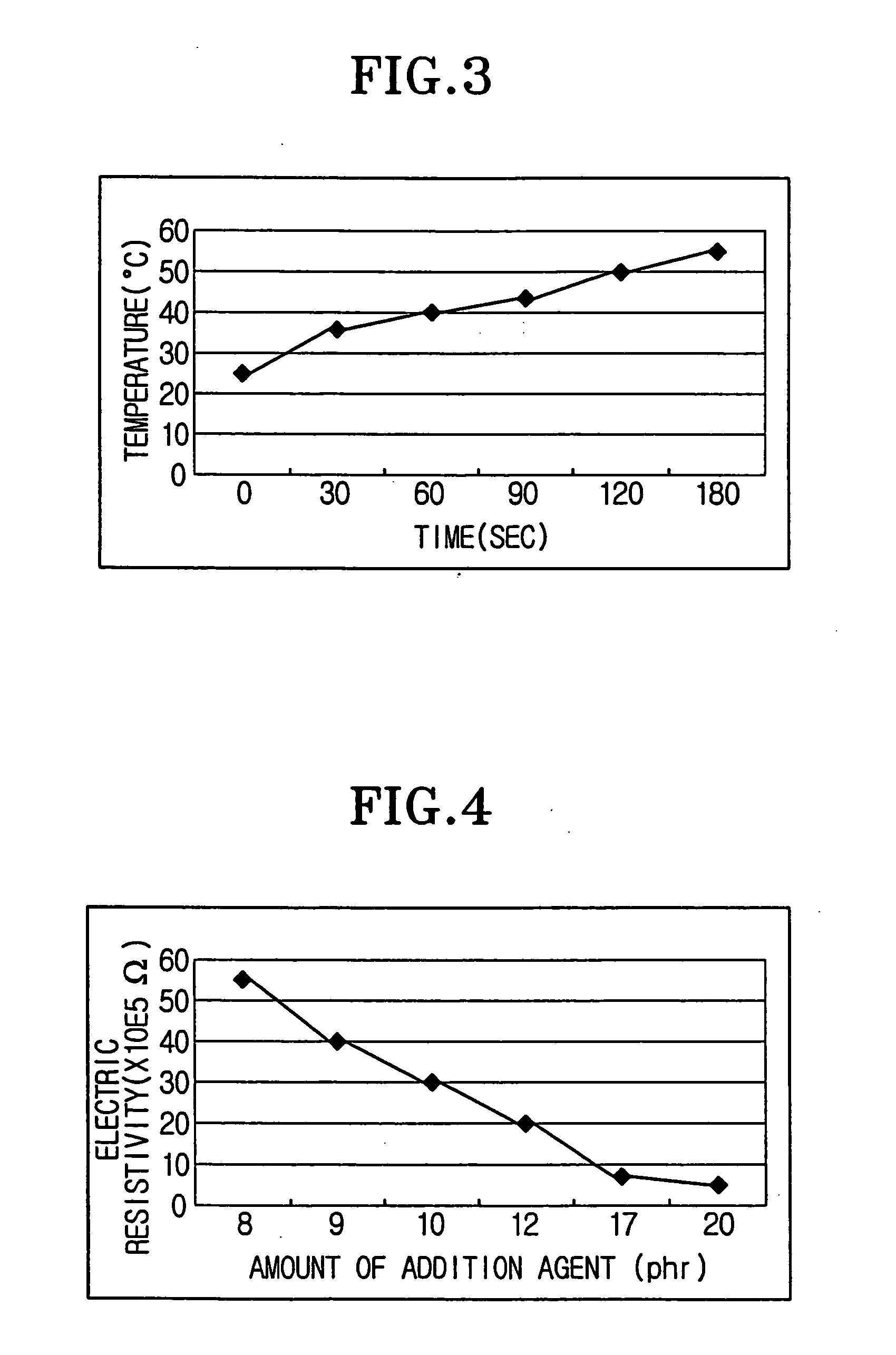Development roller of electro-photographic machine
a technology of development roller and development roller, which is applied in the field of development roller of electricphotographic machines, can solve the problems of poor adhesion between the outer layer and the inner layer, poor image grain scale, and high manufacturing cost of the development roller, so as to improve the abrasive quality, minimize migration, and improve the effect of abrasive quality
- Summary
- Abstract
- Description
- Claims
- Application Information
AI Technical Summary
Benefits of technology
Problems solved by technology
Method used
Image
Examples
Embodiment Construction
[0049] Reference will now be made in detail to the present preferred embodiments of the present invention, examples of which are illustrated in the accompanying drawings, wherein like reference numerals refer to the like elements throughout. The embodiments are described below in order to explain the present invention by referring to the figures.
[0050] From now on, an embodiment of the present invention will be described in great detail by referring to the appended drawings.
[0051] A development roller has a single layer provided coaxially on and around a shaft as illustrated FIG. 2, and includes a base material, an addition agent, and a cross-link agent. In FIG. 2, reference numerals 1, 3, 4, 5 are a photoconductive drum, a housing, an agitator, and toner, respectively.
[0052] The base material is what constitutes mainly a shape of the development roller. A rubber material that has double bonds in either a main chain or a side chain thereof and an elasticity at room temperature is...
PUM
| Property | Measurement | Unit |
|---|---|---|
| wavelength | aaaaa | aaaaa |
| wavelength | aaaaa | aaaaa |
| thickness | aaaaa | aaaaa |
Abstract
Description
Claims
Application Information
 Login to View More
Login to View More - R&D
- Intellectual Property
- Life Sciences
- Materials
- Tech Scout
- Unparalleled Data Quality
- Higher Quality Content
- 60% Fewer Hallucinations
Browse by: Latest US Patents, China's latest patents, Technical Efficacy Thesaurus, Application Domain, Technology Topic, Popular Technical Reports.
© 2025 PatSnap. All rights reserved.Legal|Privacy policy|Modern Slavery Act Transparency Statement|Sitemap|About US| Contact US: help@patsnap.com



